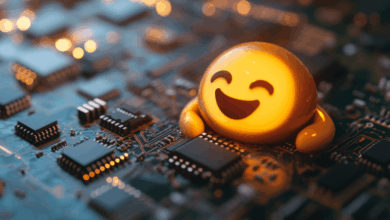New BlackBerry Phone 2025: Why Classic Models Are Trending & Relaunching

Interest and hype around BlackBerry in 2025 is growing quickly, with viral social media videos showing influencers ditching modern smartphones for classic models in a ‘digital detox’. While no new models are expected from BlackBerry itself, a Chinese firm is relaunching the Q20 Classic with upgraded hardware and Android 13.
A new BlackBerry phone was anticipated to launch in 2021, but it never materialized. However, the resurgence of interest in classic BlackBerry handsets in 2025 has reignited excitement around the brand. BlackBerry has a rich history, from being the preferred choice for professionals to becoming popular among teenagers thanks to BBM (BlackBerry Messenger).
In 2025, the famous brand is once again making waves, but without any official new models on the horizon. Zinwa Technologies, a Chinese company, is reviving old BlackBerry models by enhancing the hardware and software to meet modern standards. The first model to be relaunched is the BlackBerry Classic (Q20), rebranded as the Zinwa Q25 Pro, featuring upgraded specifications and Android 13 support. The device is set to be released in August for $400, with a $300 conversion kit available for existing Classic owners.
Zinwa has also announced plans to refresh other BlackBerry models like the KEYone and Passport, likely named K25 and P26. While the growing interest in classic BlackBerry phones may spark a desire for a new model from BlackBerry itself, there are no concrete plans for such a release.
The sudden popularity of BlackBerry phones in 2025 can be attributed to a viral trend on social media, with Gen Z users embracing the devices as a way to disconnect from the distractions of modern smartphones. Influencers on platforms like TikTok have showcased their switch from iPhones to BlackBerrys, highlighting the appeal of a ‘digital detox’ experience.
While there are no new BlackBerry models being produced, users can still utilize old devices from previous years, such as the KeyOne and Key2 from TCL or the Passport from 2014. Classic BlackBerry models like the Q10 or Curve 8520 offer a more nostalgic experience for users seeking a throwback to the early 2000s.
Overall, the resurgence of interest in BlackBerry phones in 2025 signifies a shift towards simpler, less distracting mobile experiences. Whether users are looking for a break from smartphone addiction or simply nostalgic for the iconic brand, BlackBerry continues to capture the attention of consumers in a rapidly evolving tech landscape.
The device was supposed to have a physical keyboard, 5G connectivity, and the latest security features that BlackBerry was known for. However, as the months went by, there was no sign of the new BlackBerry hitting the shelves.
Then, in early 2021, news broke that OnwardMobility had lost the license to use the BlackBerry name and branding, effectively killing off the project. It was a disappointing turn of events for fans of the iconic brand who were eagerly awaiting a modern revival.
Without a new BlackBerry device on the horizon, fans have turned to older models like the BlackBerry Classic for their fix of the physical keyboard experience. While these devices may not have all the modern features and app support that users have come to expect, they still offer a unique and nostalgic experience that can’t be replicated.
Whether you’re a die-hard BlackBerry fan looking to relive the glory days of physical keyboards or just someone curious about the brand’s resurgence in viral videos, there are still options out there for you. Just remember to weigh the pros and cons of using an older device and take precautions to protect your security and privacy.
While the new BlackBerry may have been shelved for now, who knows what the future holds for the brand. In the meantime, classic BlackBerry models continue to hold a special place in the hearts of fans around the world.
Following the initial excitement surrounding the announcement of a new 5G BlackBerry in 2020, fans eagerly awaited updates on the development process. However, a year later, no tangible progress had been made, leaving many wondering if the project had been abandoned altogether.
In late July 2021, OnwardMobility, the company behind the new BlackBerry, launched its “Pre-Commitment Program” to involve fans and businesses in the development process. This program offered early pre-order access and a chance to provide input on the phone’s features and design. Despite this initiative, details on the phone’s release date remained elusive.
As the end of 2021 approached, with legacy BlackBerry devices losing software support, concerns grew over the lack of communication from OnwardMobility. The company’s website and social channels remained dormant, leaving fans in the dark about the project’s progress.
In early January 2022, a blog post from OnwardMobility reassured fans that the project was still alive and promised more regular updates. However, just a month later, reports emerged that the project had been canceled. BlackBerry revoked OnwardMobility’s license, preventing them from using the BlackBerry name. This decision came after BlackBerry sold off its mobile patent portfolio, signaling a shift away from hardware production.
OnwardMobility’s closure marked the end of hopes for a new BlackBerry device. The company’s vague promise of a “feature-rich 5G-ready phone” hinted at a high-end device aimed at enhancing productivity. However, with the project now abandoned, fans were left to reminisce about the last BlackBerry device, the Priv, which ran Android and served as inspiration for the ill-fated new device.
The saga of the new BlackBerry phone serves as a reminder of the challenges in bringing a new device to market, even with a well-established brand. Despite the initial excitement and anticipation, the project ultimately fell victim to industry shifts and internal decisions that led to its untimely demise. The Rise of Sustainable Fashion: A Shift Towards Ethical Consumerism
In recent years, there has been a growing awareness and concern about the environmental and social impacts of the fashion industry. From water pollution and deforestation to sweatshop labor and poor working conditions, the dark side of fast fashion has been widely exposed. As a result, consumers are increasingly demanding more transparency and accountability from brands, leading to a shift towards sustainable and ethical fashion.
Sustainable fashion, also known as eco-friendly or ethical fashion, is a movement that promotes clothing and accessories that are made with respect for the environment and the people who produce them. This includes using sustainable materials, such as organic cotton, hemp, and recycled fibers, as well as implementing ethical production practices, such as fair wages and safe working conditions.
One of the key drivers behind the rise of sustainable fashion is the growing awareness of the environmental impact of the fashion industry. According to the United Nations Environment Programme, the fashion industry is the second largest polluter in the world, after the oil industry. The production of clothing and textiles contributes to water pollution, air pollution, and greenhouse gas emissions, as well as the depletion of natural resources such as water and land.
In response to these environmental challenges, many fashion brands are now incorporating sustainable practices into their business models. This includes using eco-friendly materials, reducing waste and energy consumption, and implementing recycling and upcycling initiatives. Some brands are also partnering with environmental organizations and non-profit groups to raise awareness about sustainability issues and promote eco-friendly lifestyles.
Another key driver behind the rise of sustainable fashion is the growing demand from consumers for ethically produced clothing. As more people become aware of the social and ethical issues in the fashion industry, such as sweatshop labor and child exploitation, they are increasingly seeking out brands that prioritize fair labor practices and ethical sourcing.
To meet this demand, many fashion brands are now investing in ethical production practices, such as paying fair wages, providing safe working conditions, and ensuring that workers have access to healthcare and other benefits. Some brands are also working with local communities to support economic development and empowerment, such as providing training and education programs for artisans and workers in developing countries.
Overall, the rise of sustainable fashion represents a positive shift towards ethical consumerism and a more sustainable future for the fashion industry. By choosing to support brands that prioritize environmental and social responsibility, consumers can help drive positive change and create a more just and sustainable world for future generations. As the demand for sustainable fashion continues to grow, it is clear that the future of fashion is green.





